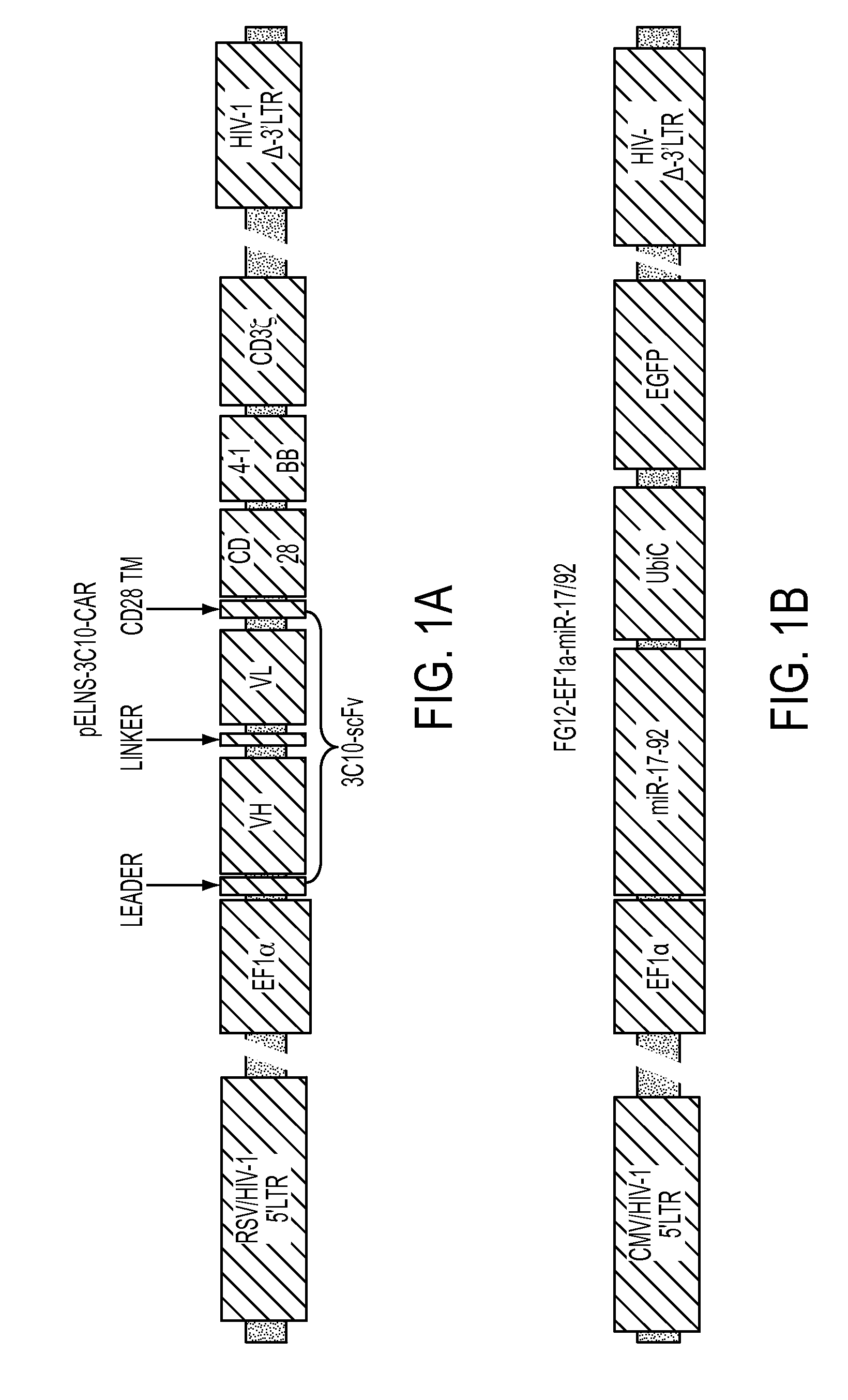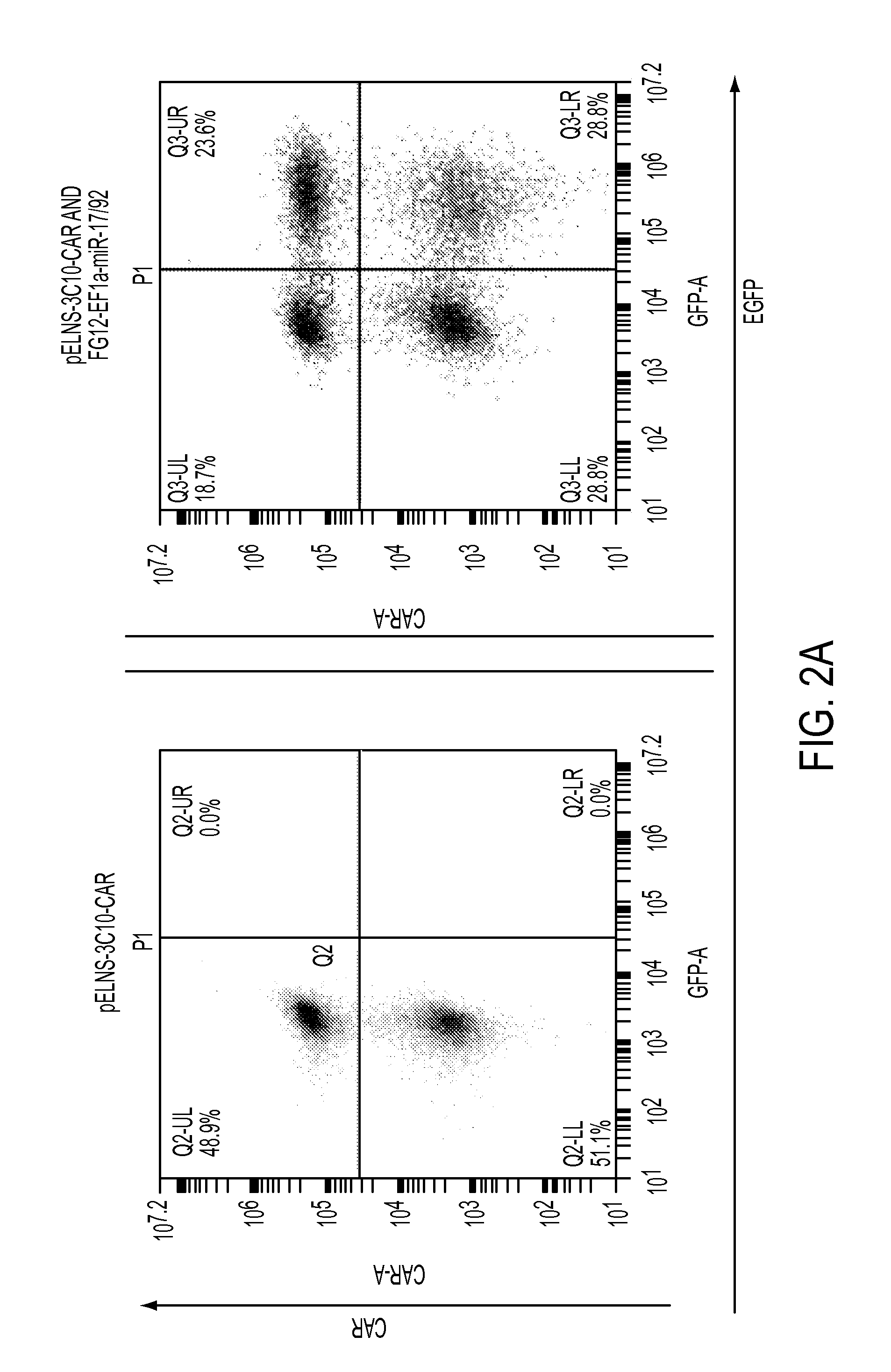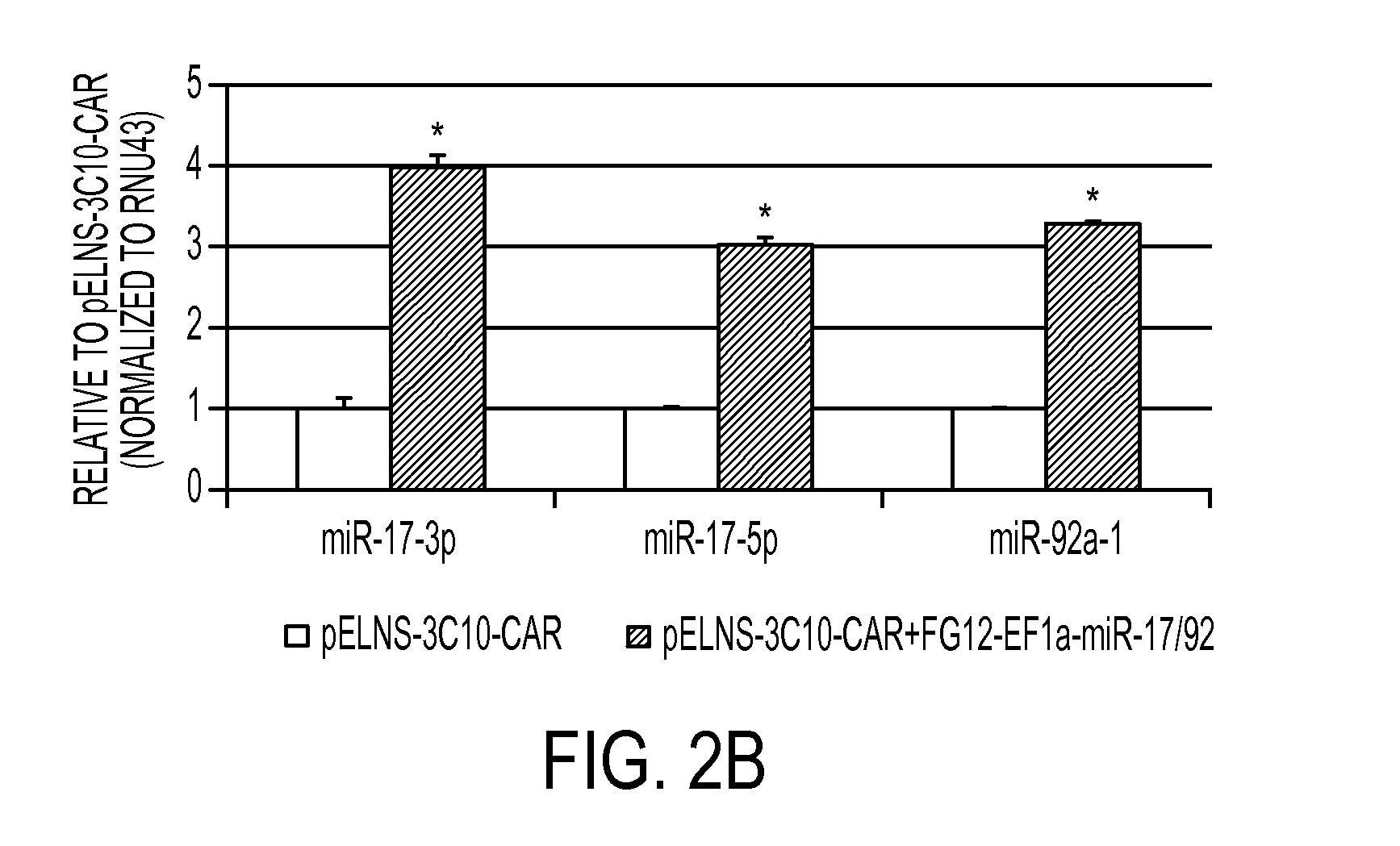TREATMENT OF CANCER USING HUMANIZED ANTI-EGFRvIII CHIMERIC ANTIGEN RECEPTOR
a technology of chimeric antigen receptor and humanized antiegfrviii, which is applied in the direction of peptides, drug compositions, and injected cells, can solve the problems of systemic suppression of immunity, affecting the effectiveness of vaccines, and relieving intact host-immune activity, so as to improve the efficacy of cells expressing car molecule and improve the effect of one or more side effects
- Summary
- Abstract
- Description
- Claims
- Application Information
AI Technical Summary
Benefits of technology
Problems solved by technology
Method used
Image
Examples
example 1
Redirected Autologous T Cells Engineered to Express EGFRvIII-Targeted Chimeric Antigen Receptor in Patients Diagnosed with EGFRvIII+ Glioblastoma
[0344]The following experiments were designed to address whether human T cells re-directed to the surface protein EGFRvIII with an antibody-based chimeric antigen receptor (CAR) would be effective in eliminating an EGFRvIII+ model of glioblastoma multiforme in NSG mice. In addition, experiments were designed to evaluate engraftment and persistence of these cells. Three different forms of CARs are tested, encompassing two different single-chain variable fragments (the portion of the CAR binding to the EGFRvIII antigen), and the intracellular signaling domains (4-1BB and CD3 zeta with and without CD28).
[0345]The immunodeficient NOD / scid / γcnull (NSG) mouse is an excellent xenotransplantation model to engraft human tumor cell lines (the brain tumor line U87, which are EGFR+ and has versions engineered to be EGFRvIII+) and human T cells. Followi...
example 2
Co-Transduction of miR-17-92 Enhances Anti-Tumor Activity of T-Cells Transduced with the Anti-EGFRvIII Chimeric Antigen Receptor in Mice Bearing Human Glioblastoma Xenografts
[0361]miR-17-92 expression confers type-1 phenotype and enhanced survival of T-cells. It has been reported that that miR-17-92 is down-regulated in T-cells derived from glioblastoma (GBM) patients. To improve the efficacy of adoptive transfer therapy against GBM using T-cells transduced with Chimeric Antigen Receptors (CAR-T-cells), a novel lentiviral vectors for miR-17-92 and a CAR consisting of epidermal growth factor receptor variant III (EGFRvIII)-specific single-chain variable fragment (scFv) coupled to the T-cell receptor CD3ζ chain signaling module and co-stimulatory motifs of CD137 (4-1BB) and CD28 in tandem (pELNS-3C10-CAR) was constructed. In addition to antigen-specific and potent cytotoxic activities against U87 GBM cells stably expressing EGFRvIII (U87-EGFRvIII), CAR-T-cells co-transduced with miR-1...
example 3
CAR Sequences
[0381]Murine monoclonal antibody (mAb) 3C10 was originally developed by immunization of mice with a 14 amino acid peptide (PEP3) including the EGFRvIII-specific fusion junction and demonstrated highly specific recognition of EGFRvIII without any detectable binding to wild-type EGFR (Okamoto et al, British J. Cancer 1996, 73:1366-1372). Subsequently, a single-chain variable fragment (scFv) of mAb 3C10 was produced and cDNA for the 3C10 scFv was obtained. While avidity and / or antigen-specificity of the original mAbs can be often lost in scFv forms, the 3C10 scFv retained its selective reactivity with the EGFRvIII-specific epitope (Nakayashiki et al., Jpn. J. Cancer Res. 2000, 91:1035-1043).
[0382]An EGFRvIII CAR was constructed by cloning the 3C10scFv (mouse) with CD28, 4-1BB, and CD3 zeta into the pELNS lentiviral backbone plasmid (EF1 promoter). Another EGFRvIII CAR was generated by cloning the 3C10scFv into a CD8ahinge / CD8TM / 4-1BB / CD3zeta pELNS lentiviral backbone, whic...
PUM
| Property | Measurement | Unit |
|---|---|---|
| nucleic acid | aaaaa | aaaaa |
| nucleic acid sequence | aaaaa | aaaaa |
Abstract
Description
Claims
Application Information
 Login to View More
Login to View More - R&D
- Intellectual Property
- Life Sciences
- Materials
- Tech Scout
- Unparalleled Data Quality
- Higher Quality Content
- 60% Fewer Hallucinations
Browse by: Latest US Patents, China's latest patents, Technical Efficacy Thesaurus, Application Domain, Technology Topic, Popular Technical Reports.
© 2025 PatSnap. All rights reserved.Legal|Privacy policy|Modern Slavery Act Transparency Statement|Sitemap|About US| Contact US: help@patsnap.com



